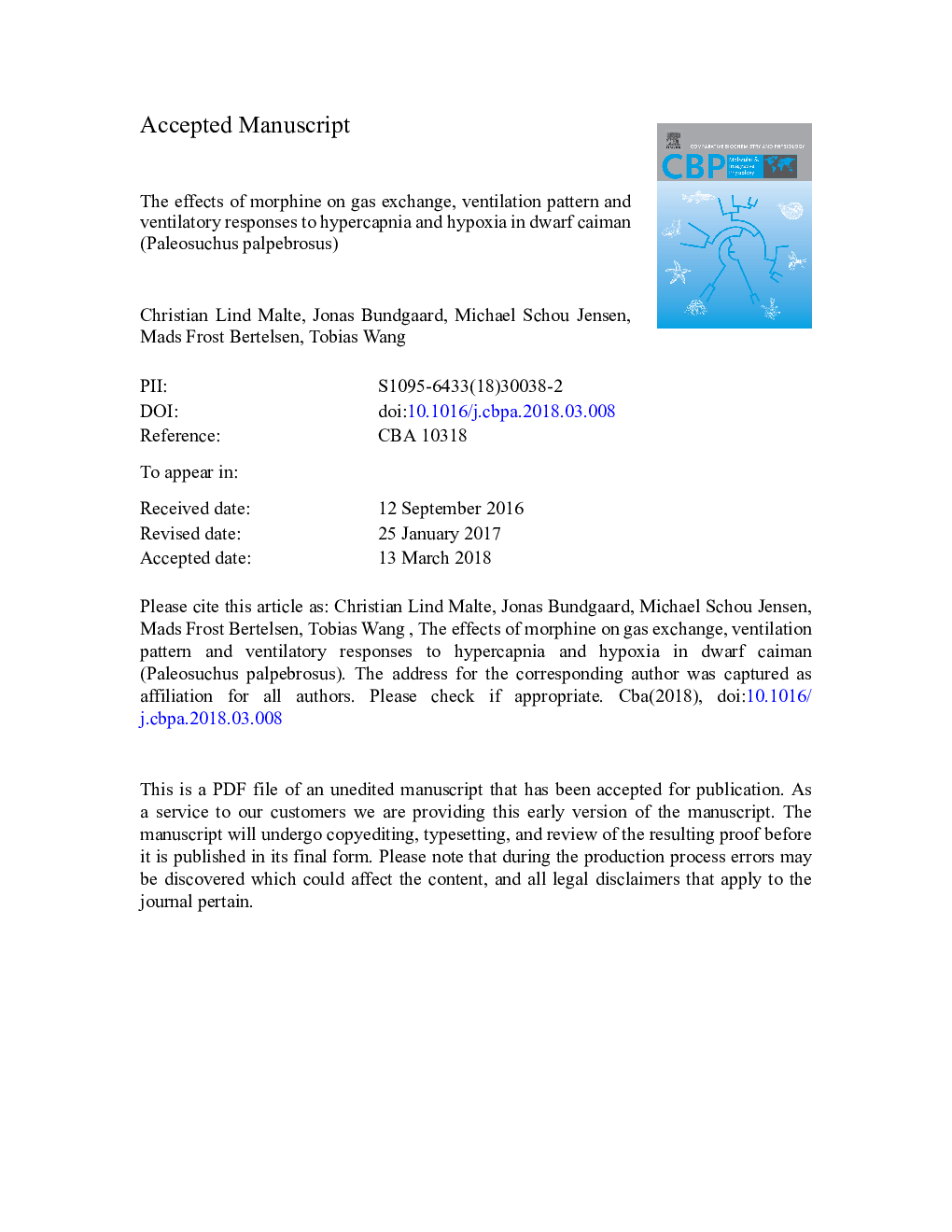| Article ID | Journal | Published Year | Pages | File Type |
|---|---|---|---|---|
| 8318139 | Comparative Biochemistry and Physiology Part A: Molecular & Integrative Physiology | 2018 | 18 Pages |
Abstract
Morphine and other opioids cause respiratory depression in high doses and lower the ventilatory responses to hypoxia and hypercapnia in mammals. Recent studies indicate that turtles respond similarly, but although they are used routinely for post-surgical analgesia, little is known about the physiological effects of opioids in reptiles. We therefore investigated the effects of morphine (10 and 20â¯mgâ¯kgâ1) on gas exchange and ventilation in six dwarf caiman (Paleosuchus palpebrosus) using pneumotachography in a crossover design. Intraperitoneal injections of morphine changed the ventilation pattern from a typical intermittent/periodic pattern with a few or several breaths in ventilatory bouts to single breaths and prolonged the apnoea, such that respiratory frequency was depressed, while tidal volume was elevated. Furthermore, the duration of inspiration and especially expiration was prolonged. The resulting decrease in minute ventilation was attended by a lowering of the respiratory exchange ratio (RER) (especially for 20â¯mgâ¯kgâ1 dose) indicating CO2 retention with a long time constant for approaching the new steady state. The changes in ventilation pattern and gas exchange reached a new stable level approximately 3â¯h after the morphine injection and did not significantly affect steady state O2 uptake, i.e. O2 consumption. As expected, the ventilatory response to 5% O2 was lower in morphine-treated caimans, but minute ventilation upon exposure to 2% CO2 did not differ significantly different from control animals.
Related Topics
Life Sciences
Biochemistry, Genetics and Molecular Biology
Biochemistry
Authors
Christian Lind Malte, Jonas Bundgaard, Michael Schou Jensen, Mads Frost Bertelsen, Tobias Wang,
